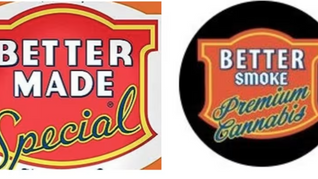The average THC potency of illicit marijuana flower in the United States is 16%, according to the U.S. Drug Enforcement Administration.

OG Article: here
View our Fair Use Policy: here
That’s well below the THC levels seen in commercial marijuana stores, where accusations of THC potency inflation have been circulating for years.
The revelation came from the DEA’s National Drug Threat Assessment report released this week.
Steady potency increase
Citing data from the University of Mississippi’s Marijuana Monitoring Program, which tests seized illicit cannabis submitted for analysis by the DEA as well as state and local law enforcement, the DEA noted a decadeslong sharp and steady increase in cannabis potency that’s accelerated in recent years.
The 16% potency is an increase of 29% from 2021, according to the DEA.
“The potency of THC in leafy marijuana is at an all-time high, increasing the potential risk of negative effects on users of any form of the drug, and on children who may consume edibles made with these substances,” according to the agency.
Sources of seized marijuana include illegal grows operated by transnational criminal organizations, including Mexican drug cartels as well as “Asian drug trafficking organizations” that “hide behind” state marijuana law, the DEA noted.
High-profile examples include “nearly 28 tons” of cannabis “shipped from an Oklahoma grow facility licensed by the Oklahoma Medical Marijuana Authority,” the report found.
What’s behind rise in potency?
There’s no clear answer as to why illicit cannabis would be significantly weaker than marijuana sold in the regulated stores that bemoan unlicensed competition.
One theory is that the THC percentages of lab-tested commercial marijuana has been grossly inflated as a result of market pressures.
On the aggregate, cost-conscious consumers gravitate toward cannabis flower with the most THC, even though, as many experts stress, that’s not a reliable indicator of quality.
As a result, producers are keen to find the lab that will return favorable results, according to the theory.
And labs wishing to retain business are pressured to return high results.
One study of Colorado commercial cannabis found flower THC potency inflated by 23% to 35%.
In California, average THC potency decreased by 7% in the first three months of 2024 after a change in state law governing how labs test for THC, according to SFGate





Comments